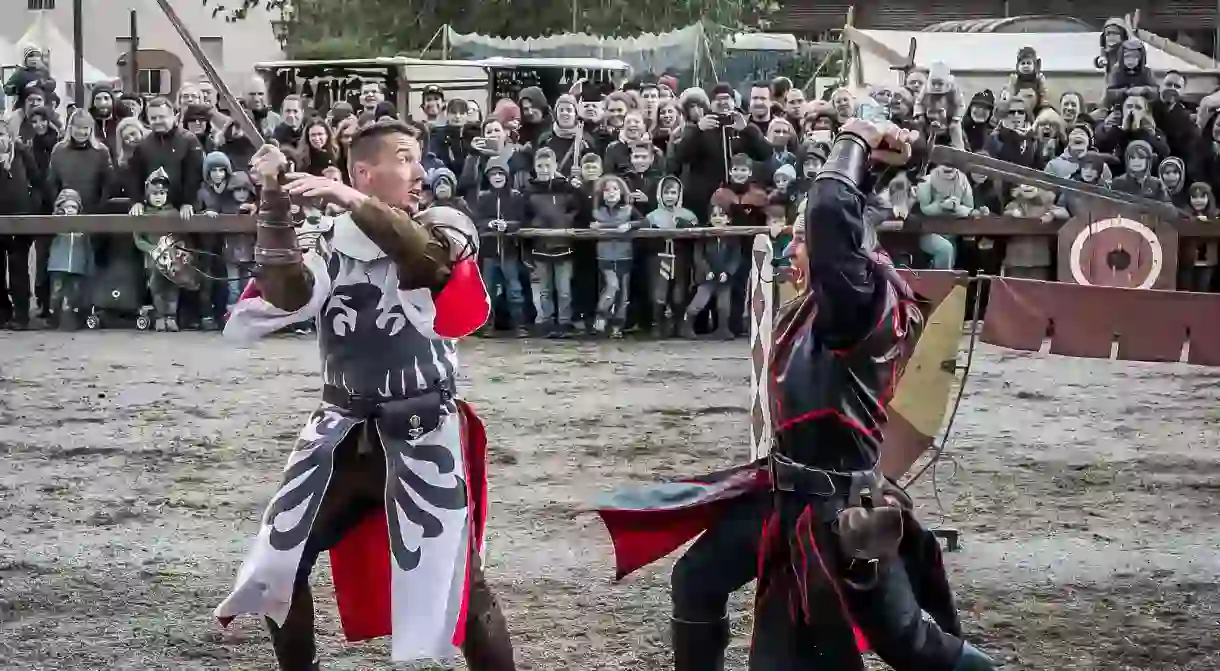A Local’s Guide to Spandau, Berlin

Spandau is situated on the very edge of Berlin’s most western border, and can be found on the other side of Berlin’s Havel river. The first known people to have settled here were Slavic tribes in the 6th century. The name Spandau originates from an Ascanian count (dynasty of German rulers) named Albert the Bear—such a worthy name.
By the 17th century, Spandau was passed around between different dominating dynasties. During the Thirty Years’ War Spandau was conquered by the Swedes, then by Napoleon, and then by Prussian and Russian troops. Spandau was an independent city until the 1920s, when it officially became a part of Berlin. After the Second World War the Spandau Prison was used to imprison Nazi war criminals, who were later trialed under the Nuremberg Trials. If Spandau’s history isn’t intriguing enough, let us direct you to some of its most interesting gems. Spoiler alert: you are about to discover Berlin’s best second hand shop.

Konditorei Fester
This café is absolutely amazing—a truly remarkable place. Every one of its customers will be sure to remember this experience, and very likely to associate Fester with Spandau. Even vegans wouldn’t be able to deny how impressive Fester’s cakes and tarts are.
This bakery has been around since 1928, and they are master cake bakers. Their impressive cakes can stand up to 10 layers high, with very, very generous cream filling between and over every layer. The bakers are like architects, constructing and designing their cakes with complete mastery. The crowd is filled with committed regulars, who seem to have been around since the café first opened.
Call it a gallery day and admire each piece of pie as a masterpiece that you can afford and buy at a reasonable price, and consider yourself a hero if you can finish an entire piece of your choice.
Konditorei Fester, Markt 4, 13597 Berlin, Germany, +49 30 333 5872

Zitadelle Berlin
This 16th century citadel is one of the best kept military preserves, not just in Germany, but in all of Europe. The fortress stands on an island between the Havel river and the Berlin Spree. The fortress was built from 1559–1594. Zitadelle Berlin stood ground against many attacks until Napoleon conquered it in 1806. Many years later, close to the end of the Second World War, Berliners relied on the fortress for protection against the Soviets. The fortress was unbeatable and caused the Soviets to negotiate a surrender with its inhabitants. Explore the indoor world of this fortress, its beautiful tornado staircase, and don’t forget to check out all of the impressive sculptures in and around this impressive monument.
Zitadelle Berlin, Am Juliusturm 64, 13599 Berlin, Germany, +49 30 354 9440


Gotisches Haus
This 15th century Gothic House is one of the most important Medieval buildings standing in Berlin. Visitors are allowed to tour all of the 13 rooms in this Medieval house. On the top floor you can visit the permanent exhibition there which displays how living in Spandau used to be for its residents. On the bottom floor there is a temporary exhibition that changes year round. This is certainly a place to admire in Germany, considering how much of the country was destroyed throughout its lifetime.

Nikolaikirche
What would a European town be without its church? Nikolai Church won’t be hard to find if you’ve already made it out to Spandau. All you have to do is crane your neck back slightly and look for the two towers dominating the Spandau skyline. The church was originally built over 750 years ago, but, like most of the monuments in Berlin, was hit really hard during the many wars it stood witness to. Bombing raids in the Second World War were the final blow that crushed and crumbled the Nikolai Church to its bare foundation (which dates back to the 13th century).
Nikolaikirche, Nikolaikirchplatz, 10178 Berlin, Germany, +49 30 2400 2162

The Militärhistorisches Museum der Bundeswehr – Flugplatz Berlin-Gatow
This museum is one of Berlin’s most interesting historical museums. The Museum of Military History explores the adaptation of aircrafts into the war field and how they have transformed the art of war. This is a highly educational journey that will explain to its audience the drastic shift in the world’s perspective of warfare. Some of the deconstructed ideas include how the complications and tactics of crossing borders have changed, the new speed in transportation of messages, bombs, and important diplomats, and the dehumanization of mass murder, are all credited (positive or negative) to the aircraft. The museum has several ongoing and changing exhibitions and admission is free to all visitors.
The Militärhistorisches Museum der Bundeswehr, Am Flugplatz Gatow 33, 14089 Berlin, Germany, +49 30 3687 2601

Second-Hand-Kaufhaus Fundgrube
If you’re looking for one of Berlin’s best kept secrets, you’ve just found it. This second hand shop is most similar to Salvation Army in the US. This means that all of the trendy, expensive, second-hand Berlin shop owners are probably coming here to buy their merchandise and sell it for more than triple what they paid for it. No judgment, everyone’s gotta make a living one way or another. But, if you’re looking to save money on your wardrobe and yet not compromise on style, then this is the place to go.
Helpful tip: come with a lot of empty bags—there will be too many goodies here that you won’t be able to resist. Plus your wallet will barely feel the weight loss. Oh, and another tip: don’t expect anyone there to speak any English—these are, after all, true Berliners.
Second-Hand-Kaufhaus Fundgrube, Am Oberhafen 16-20, 13597 Berlin, Germany, +49 30 33 096 1622













